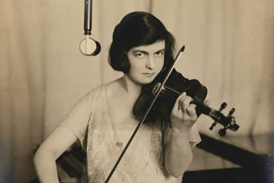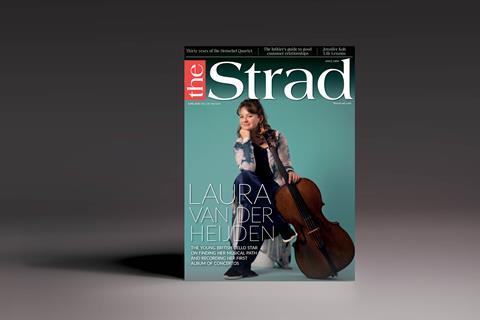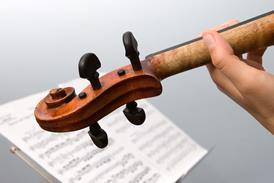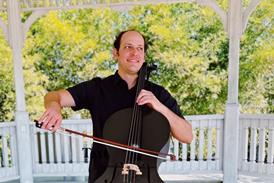Achieving sounds ranging between delicacy and boldness, as well as everything in between, the double bassist shares her thoughts and advice on fulfilling multiple roles in a chamber arrangement of Mozart’s work, which was recently performed at the Solsberg Festival

Read more Featured Stories like this in The Strad Playing Hub
The best things in life tend to happen unplanned: as I was leaving the first rehearsal of Strauss Metamorphosen at the Solsberg Festival, I was asked unexpectedly to add a bass part to Mozart’s Sinfonia concertante arranged for string sextet.
What does one expect from a bass player in this situation? If you think it just involves doubling some of the parts of the piece, I must tell you, from personal experience, that it will not make much musical sense within the ensemble at the first rehearsal. Other members of the ensemble will cut you off at some point thinking that it sounds too heavy - even if you are not playing heavily! This is not ideal as a bass player, because playing chamber arrangements of fantastic repertoire is a great, and possibly rare opportunity for us, so we want to make the most of it.
For an arrangement that was not intended for double bass specifically, such as the Mozart Sinfonia concertante, you will face a few challenges as a bass player: the octave ranges, playability, sound texture and articulation. What is most important is that it shouldn’t become or sound symphonic with your participation, meaning neither too heavy nor too light. To be in the middle of this range is what becomes challenging as a bass player. I call this the art of ’To be, AND not to be’.
How does a bass player build their part? First of all, I would advise you to find the octaves that might not be the most comfortable for you, but that make musical sense and fit the texture of the other voices. Analyse all the voices of the general score and find what suits best in terms of complementary colours. Hearing it 360 degrees in your head as if you were a conductor helps.
Listen: The Strad Podcast #98: finding new double bass repertoire with Valentina Ciardelli
Read: Masterclass: Maxim Vengerov on Mozart Sinfonia Concertante K364
In terms of playability, it will probably be slightly uncomfortable for you at times, but believe me, it’s worth the struggle. I consider Mozart a ’singing’ composer. I learnt a lot about truly singing through playing and hearing the music as if were a human voice from the ex-violinist and conductor Gabor Takács-Nagy.
The range of the octaves that you choose for your brand new part will determine the atmosphere and colours of the piece. This is the most important and magical part of this kind of work because it truly develops your musical instincts. Depending on the range of octaves that you choose, you will change the character of the story in the piece and the ensemble. This is great fun!
Another thing I learnt from Gabor Takács-Nagy’s approach to Mozart is that there are no rules for bowings. It is most important to bring to life the personality of the composer. Sometimes, sticking to conservative rules or even editions do not always achieve this. In Mozart’s music, we find moments full of freshness and jokes but also other moments of great depth and sadness that can easily move you to tears. Don’t be afraid of thinking out of the box for your bowings to bring all these emotions to the highest point of your performance.
The last step for you as a player would be to master the art of being there and not being there at the same time. This kind of work, such as the sextet arrangement of Mozart’s Sinfonia concertante, is not meant to sound completely symphonic, otherwise we would have stuck to the orchestra version. Indeed, you will find yourself in the position of being three people at the same time: sometimes soloist, sometimes chamber musician and sometimes orchestra player. Your task is to find out who to be and what to be at each moment . Recording the rehearsals will help you to do this ultimate task, giving a big creative boost to your intuition as a bass player and most importantly, as a musician.
Watch Uxia perform the work at the Solsberg Festival 2023 in the video below:
Watch: A star-studded line up performs Mozart Sinfonia concertante
Read more Featured Stories like this in The Strad Playing Hub
The number one source for playing and teaching books, guides, CDs, calendars and back issues of the magazine.
In The Best of Technique you’ll discover the top playing tips of the world’s leading string players and teachers. It’s packed full of exercises for students, plus examples from the standard repertoire to show you how to integrate the technique into your playing.
The Strad’s Masterclass series brings together the finest string players with some of the greatest string works ever written. Always one of our most popular sections, Masterclass has been an invaluable aid to aspiring soloists, chamber musicians and string teachers since the 1990s.
American collector David L. Fulton amassed one of the 20th century’s finest collections of stringed instruments. This year’s calendar pays tribute to some of these priceless treasures, including Yehudi Menuhin’s celebrated ‘Lord Wilton’ Guarneri, the Carlo Bergonzi once played by Fritz Kreisler, and four instruments by Antonio Stradivari.
































No comments yet